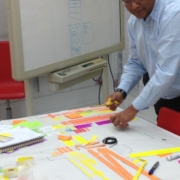The Role of HR in a Continuous Improvement Organization: Training
(Reposted by permission of the author from LinkedIn)
Back in the 1980’s I was introduced to the concept of “entertrainment”. At first, I laughed at the idea that training was in place to entertain its students. I rejected the concept outright but began to think about what it is that training should do. As we started Toyota Georgetown, I knew that training could not be the endless list of courses that represent brainstorming of what team members needed. HR was challenged with making sure people can do continuous improvement to their job. As a result, I rethought what training needed to be and develop a list of what I called notions of training. I used the term notion because I had no empirical evidence of the impact of training in Toyota Japan at that time and my ideas had not been put through the process of Nemawashi (literally means preparing the soil for planting) which was a process for gathering consensus, alignment to goals and support for implementation. This meant that these notions would remain as such until I had consensus from the management team.
I was told in Japan that my job was very important and accepted it as both a challenge and a level of support given to training by the Executives. I also was given a great deal of information about training at Toyota Japan but was never pressured to duplicate it. My challenge was to figure out what training was needed for Toyota Georgetown.
These notions evolved over time from my background in organizational development, my knowledge of validation of training, my belief in a systems concept and my belief that successful behavior was the end product of a good training program. All of these combined made my challenge substantial and difficult as I always had to achieve a pace and expectation that operations would find acceptable. This is no small chore because the rhythm of Toyota is demanding.
My first task was to define the competencies that will ultimately drive successful behavior. Successful behavior was determined by interviewing those inside of Toyota worldwide considered to be examples of individuals & teams that accomplished demanding goals. This study presented us with over 100 successful behaviors. These had to be combined and articulated into less than 30. The list of competencies was developed and put into action first in the selection system. They were later validated and reduced in number to allowed more efficient and effective selection.
The second task was to develop a level of training that could be committed to by management and to create a curriculum that could be supported. The courses required 120 hours of off the job and on the job training. It was determined that the pace would be 40 hours per year for three years. This expectation was given to production to put in their overall plan. Production was skeptical but agreed to meet the new standard.
Accompanying the discussion around the overall goal for training was these notions. They were used to guide our development of courses and the attainment of competency.:
Notion 1: Organizations go through predictable stages to achieve development of their culture
- The stages are: Security, trust, participation and involvement
- Most missions require complementary multiple behaviors for success
- Individual growth is based on achieving competencies and skills in a determined context
- Coaching and mentoring provide additional learning and application on the job
- Continuous improvement enables the goals to be accomplished
- Achieving involvement is an indication of acceptance of accountability
Notion 2: Align competency to the organizational outcomes
- Competencies are defined as collections of behaviors that determine success
- Success is defined as accomplishing the goals
- Alignment from training is to define and deliver a competent individual
Notion 3: Success can be defined by using competencies from the proper context
- Competency and success in the organization are synonymous
- All levels of the organization need a combination of technical, conceptual and human interaction on skill
- Continuous improvement is the application of competency for positive change
- The competencies at the top of the organization are an accumulation of all preceding competencies plus specific ones for the current level
- Most technical training is learned effectively on the job
- Training lays the foundation and the expectations for competencies
Notion 4: The Role of Training to develop relevant competency:
- On the job training- learning while accomplishing the assigned tasks
- Off the job training- for laying the foundation in a learning environment
- Voluntary training for enhancing the competencies on a practical level
Notion 5: Design the curriculum using levels of learning with competence accumulating as you go up in the organization. Basic competencies are the foundations for every function
- Introduction to the job process of expectation setting with appropriate competency foundation
- Skill Building- learning deeper levels of competency in application
- Performance- taking competency and actualizing it on the job for the right goals
- Competency deepening- becoming a master at the level assigned as a goal
Notion 6: Competency can be used for many purposes
- Selection- finding people with competency match
- Performance appraisal- assessing competency on the job
- Training- insuring training relates to actual job performance
- Promotion- aligning known competency for the next level with selection for promotion
- Development- creating individuals that can meet expectation and provide continuous improvement
- Career planning- allowing the individual to see what is required for promotions
- Job rotation- insuring the person moving to another job has the right competency
- Organizational development- continually developing new competencies to support the business as it grows and takes on new expectations
Notion 7: Four levels of evaluation of training performance:
- In the class
- Behavior on the job
- Effectiveness in achieving goals
- Total organizational effectiveness
Notion 8: Training is only as effective as the support provided
- Support is aligned with training
- Outcomes from training allow the learner to see effectiveness on the job
- Performance on the job starts with aligned training
Notion 9: The learning organization is real and a discipline
- Every individual is expected to learn and grown
- Starts with the development of utilization of standards
- Is facilitated by the process of maintaining the standards
- Is achieved when new learning automatically is embedded in the existing standard to become the new standard
- The pace of training should be consistent with the need to accomplish competency on the job and growth of the organization
- On the job performance requirements drive the hours per year of training
- On the job performance becomes the standard for training delivery effectiveness
- Cost is mostly managed through the effective use of OJT
- Trainers must come from inside the organization and support the culture
Although these notions guided us in creating and delivering training, the key aspect was the support given to the training in the actual workplace. HR was the key sub-system we had to support. To achieve this, we developed a process for getting support through actual experience in the learning. For every layer to all management and supervision, we conducted training aimed at gaining support for the acceptance of key drivers in their success. For the Executive level, we wanted to answer the question, “how training supported strategic plans”. For the Management level, we focused the training on “how training supports the annual plan”. For the Supervisory level we focused the training on the “daily interaction and support required to meet daily schedule attainment”. Although the competency development was consistent for their level of understanding of how and why, the training was developed to focus on relevance to the challenges of operating. With support from the ER section, we were able to see first-hand the effects of training as they provided to us the aligned way to achieve our overall goal at the work-site.
Each training program was evaluated for effectiveness and efficiency and then compared to actual results at the job site for our evaluation process. We were not looking for anything other than the development of successful behavior on the job. Annually we would assess the effectiveness of training.
The “entertrainment” was eliminated as each student must demonstrate the behaviors we were teaching. This demonstration for us was the accountability required for training to be relevant. However, if I were to evaluate what made training most successful, it would be the support system set up. The experts from Japan were easily able to demonstrate the behavior we were teaching. What was required for Kentucky was a simple extension of the very best of Toyota from Japan. For anyone, once they understand the Toyota Production System, they could walk into any Toyota plant worldwide and see the same behaviors. For us Toyota training was a significant part of establishing the standard. Deviations were easy to see and problem solving was naturally undertaken once the standard was understood. The understanding of the standard came from all possible sources of learning: the line, the pilot and the training center.
HR has the overall responsibility of creating the person who could achieve their standard (defined as the best way we know) while being able to see opportunities for improvement. Our fit with HR was the understanding of the competencies & behaviors required and the way to make it happen in Training and on-the-job. Working together, HR will become the driving force for performance and improvement.

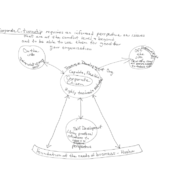
 2019, Total Systems Development, Inc.
2019, Total Systems Development, Inc.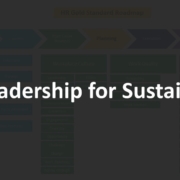 2019, Total Systems Development, Inc.
2019, Total Systems Development, Inc.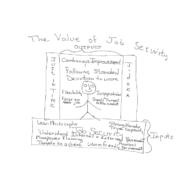
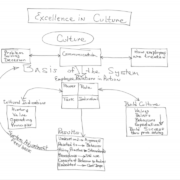 Total Systems Development, Inc., 2019
Total Systems Development, Inc., 2019 2019, Total Systems Development, Inc.
2019, Total Systems Development, Inc.